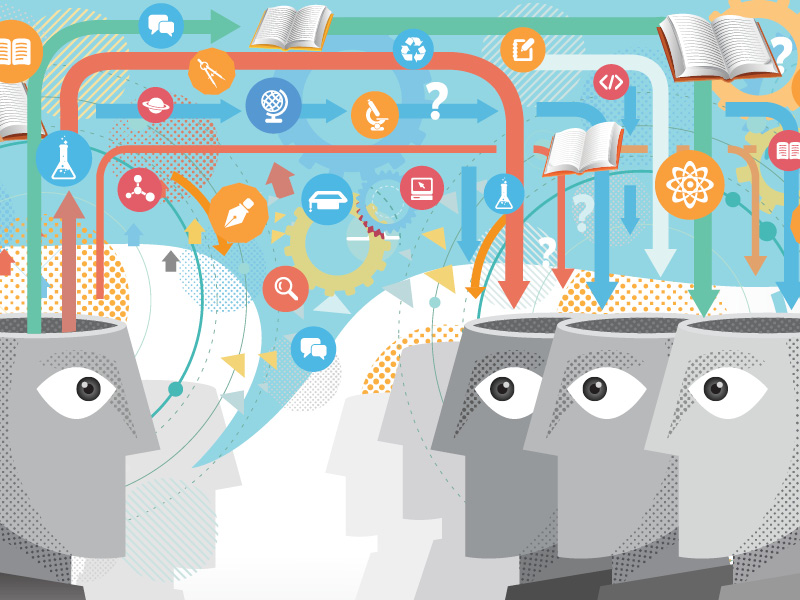My previous articles in this series examined why developing business leaders who can drive innovation and think strategically is essential if Australia is to flourish. It’s time for the final piece of the leadership jigsaw: employee engagement
Employee engagement doesn’t just mean making every worker happy or getting high scores in staff satisfaction surveys. It means ensuring everyone is invested in the company’s success, understands the part they play and is willing to do their best.
It leads to enviable attraction and retention figures, rising productivity and a workforce that doesn’t fear change. Your ability to engage people will impact your success and that of the organisations you lead. It’s possible to be a good enough CEO with weak engagement capabilities, but not a great one.
3 reasons why employee engagement matters:
- You can’t drive innovation, restructures and other major changes if employees don’t buy what you’re selling; your business won’t overcome challenges either. In a shifting world where evolution is a competitive advantage, this matters.
- Numerous studies show that improving employee engagement leads to increased productivity and overall business success.
- Australia is a mature economy undergoing structural change. Service industries – which are people-centric – account for 60% of our economy and that percentage is growing. In future, the services sector will underpin our economic strength and present the most employment opportunities. It’s highly likely that you’ll be working in it or aspiring to do so.
If engaging employees is so important, why doesn’t every leadership development program prioritise how to do it? In my opinion, it’s a mixture of a failure of the leadership development industry and a lack of insight and action at the top level of many corporations.
Most providers focus on developing the business skills of yesterday when what we need is leaders who are equipped to deal with the demands of tomorrow.
The employee engagement challenge
The need to improve employee engagement is not confined to Australia. CEOs around the world are increasingly aware of the difference it can make. So how does Australia measure up? According to Aon Hewitt’s international research, our workers are up to 5% less engaged than those in other countries.
Meanwhile, local studies show Australian workers score their leaders low for consultation and participation in decision-making, which are both important for successful employee engagement and effective leadership.
These results are not just a failure of personal leadership by our CEOs, but of their ability to influence workplace culture. Engaged employees don’t just respect and trust their leaders, they feel supported and valued by the prevailing culture.
This makes improving employee engagement a multi-faceted challenge for CEOs. Not only do you have to develop yourself, you must champion change in the entire working environment. It’s a complex area that can’t be covered in a day, so perhaps it’s not surprising that it isn’t at the forefront of every leadership development initiative.
5 ways to tackle employee engagement
- Develop personal engagement skills.
- Include middle managers.
- Leverage technology.
- Build the right culture.
- Focus on the future.
These include relationship-building capabilities outside the usual the CEO lexicon, such as empathy, consultation, compassion, curiosity and authenticity.
It’s not all about the C-suite. The relationship between frontline managers and their teams is critical for getting buy-in, influencing behaviour and driving productivity. Make the development of these leaders a priority.
If improving management engagement skills is such a large-scale undertaking that face-to-face programs would be too lengthy or costly, invest in distributed learning platforms to maximise reach.
Learn how to create an environment where key engagement qualities are valued and rewarded. Put in place a strategy, embed behaviours, measure results, continuously improve, and incentivise behaviour change.
Millennials expect high levels of engagement from employers. If you can build collaboration, mentorship and other engagement elements into the workplace, you will attract, motivate and keep the best young talent.
Australia is experiencing a once-in-a-generation economic change. If we’re to continue growing as a nation, we must develop business leaders who are future-ready.
Our leadership development industry should be focusing less on traditional business skills and more on new-economy capabilities such as innovation, strategy and employee engagement. If we can do that, Australia’s future will be much brighter.








I think number is key build the right culture and that’s where filing under too difficult occurs.
I have found that developing a shared understanding and commitment to practice collaboration from the top down using a co-facilitation process results in significant change and engagement. Like any change effort sustainability is then the key
This has been one of my favorite articles of the year. I couldn’t agree more. Brilliant insights and very well crafted. Thanks.